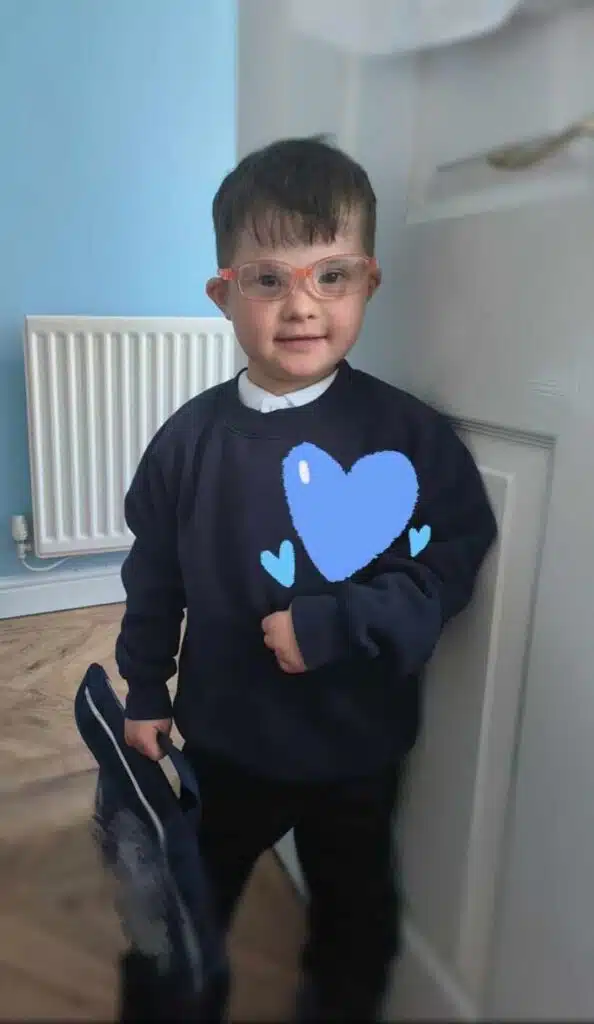20th June 2024
In support of World Continence Week 2024 #WCW2024, we are delighted to share this Voices blog from June Rogers MBE, Paediatric Continence Specialist, on the development of a consensus guideline to toilet training all children, including those with disabilities.
Solving the enigma – a consensus guideline to toilet training all children, including those with disabilities
Becoming toilet trained is an important milestone that all parents strive for, however for parents of a child with a disability this can often seem to be an impossible task. With a background in special school nursing and having worked as a specialist children’s bladder and bowel nurse for over 30 years, I am aware that, with the right advice and support, there is no reason why many children with disabilities cannot be toilet-trained at the same age as their peers.
A study by Eke et al[1] highlighted the lack of evidence-based interventions regarding toilet training children with a neurodisability. They recommended better training for health, education and care professionals about toileting and that children should have early access to appropriate personalised treatment informed by evidence and the lived experiences of children and their families. So, working with colleagues from throughout the UK, we have shared our experiences and expertise to create a consensus guide to support the toilet training of all children.
The age of toilet training has increased in recent decades for several reasons. In the 1960s, the average age at which children were toilet trained was 2 years and now the average age has increased up to age 3 years. This has resulted in many children starting nursery pre-school still in nappies.
A recent survey by Kindred2 of over 1,000 teachers reported that 90% had at least one child in their class who was not toilet trained. This has an impact not only on the teachers, who stated that they were having to use learning time to manage personal care and hygiene issues, but also the child with the risk of bullying and name calling.
Late toilet training can result in reduced social opportunities and low expectations when starting school. There is also evidence that starting toilet training later can lead to issues with bladder health later on[2]. Professionals need to have high expectations to enable all children, including those with a learning disability, to achieve their potential. They should understand the importance of early intervention, to promote development of the skills that are required for maximum possible independence with toileting and know how to approach this.
Health visitors and health visiting team members such as community nursery nurses have a vital role in supporting parents and carers with their children transitioning from their nappy to a potty or toilet.
For children with learning difficulties, it is often their lack of understanding of social norms and the lack of opportunity to use the potty or toilet that causes delayed toilet training, rather than an inherent problem with the bladder or bowel.
There is currently minimal research to inform best practice on how and when to introduce toilet training for children with learning disabilities, and for all children the literature is unclear and divided. There is often the thought that the child has to show some form of ‘readiness’ before toilet training can begin. However there has been no research or consensus regarding what those signs of ‘readiness’ are.
From our own clinical experience, we have found that it is possible to successfully toilet train children with learning difficulties, particularly children with Down syndrome, age appropriately[3]. Toilet training is essentially the development of a set of skills, and all children should be proactively supported to develop those skills early in childhood.
Working for over 3 years with Down Syndrome UK (DSUK), with over a thousand families with a child with Down syndrome, a ‘toilet skill development programme’ was developed. This breaks the process of toilet training into 4 steps and starts with early potty sitting and moves forward to step 4 when the nappy comes off and the more formal process of toilet training begins. Each step enables the child to become aware of and develop the skills necessary for them to be toilet trained. The programme (#pants4school) has proved very successful in enabling many of the children with Down syndrome to start school in pants rather than a nappy.
The success of the programme resulted in us being contacted by families of typically developing children for help in getting their child toilet trained. This highlighted a gap in research-based validated guidelines regarding toilet training for all children, with potential transferable learning from the work that we had been leading with children with Down syndrome. As a result, we carried out some research and put together a consensus-based, peer-reviewed, best practice document regarding toilet training for all children. This document is based on evidence and research, where available, and on clinical experience.
The guide was created in collaboration with Bladder & Bowel UK and Down Syndrome UK and can be accessed here.
Kelly, mum to Tommy who has Down syndrome, shares her experience of the toileting programme:
We joined one of the first #pants4school Bootcamps when Tommy was about 8 months old…As Tommy became more familiar with sitting on the potty, we inevitably started to get some lucky catches! We made a huge deal out of this with lots of high fives, cheering and explaining…keeping the experience as positive and as fun as we could. As the lucky catches increased, we then progressed to more structured toilet visits, on waking, an hour after eating/drinking and before bedtime and continued using the Makaton sign…Tommy ended his nursery adventure and went into school in pants… He’s currently coming to the end of his reception year…he has excellent introspective awareness of hi internal cues and self-initiates his toileting around 90% of the time. Tommy can vocalise his need for the toilet and has pretty much stopped using Makaton, and with the support from school is working on becoming fully independent with wiping and washing, a target he is very close to achieving!

Photo of Tommy, shared with kind permission from his mum
June Rogers MBE, Paediatric Continence Specialist
References
[1] Eke H, Hunt H, Ball S, Rogers M, Whear R, Allinson A, Melluish J, Lindsay C, Richardson D, Rogers J, Hutton E, Madden N, Wright A, Anderson R, Logan S, Thompson Coon J, Morris C. Improving continence in children and young people with neurodisability: a systematic review and survey. Health Technol Assess. 2021 Nov;25(73):1-258. doi: 10.3310/hta25730.
[2] Joinson C, Heron J, Von Gontard A, Butler U, Emond A, Golding J. A prospective study of age at initiation of toilet training and subsequent daytime bladder control in school-age children. J Dev Behav Pediatr. 2009 Oct;30(5):385-93. doi: 10.1097/dbp.0b013e3181ba0e77.
[3] Rogers J, Enoch N (2020) Early intervention toileting training for children with Down syndrome. BJN 10;29(22):1325-1326. doi: 10.12968/bjon.2020.29.22.1325.



